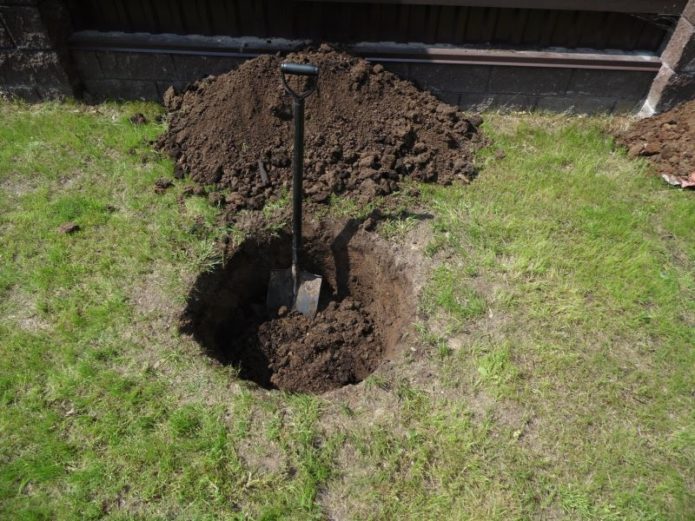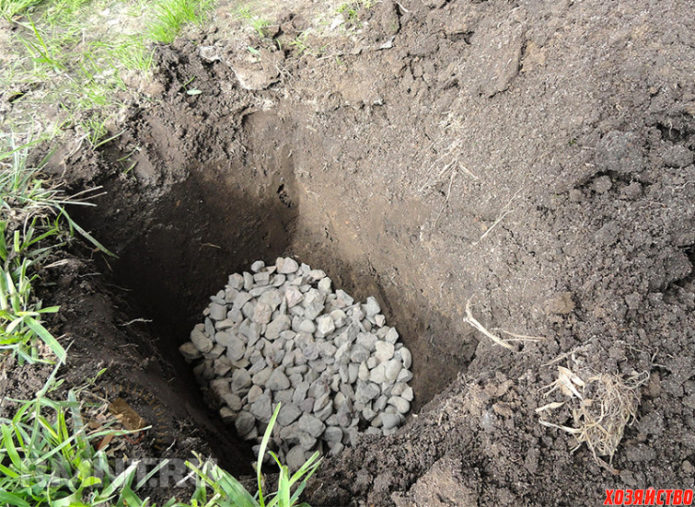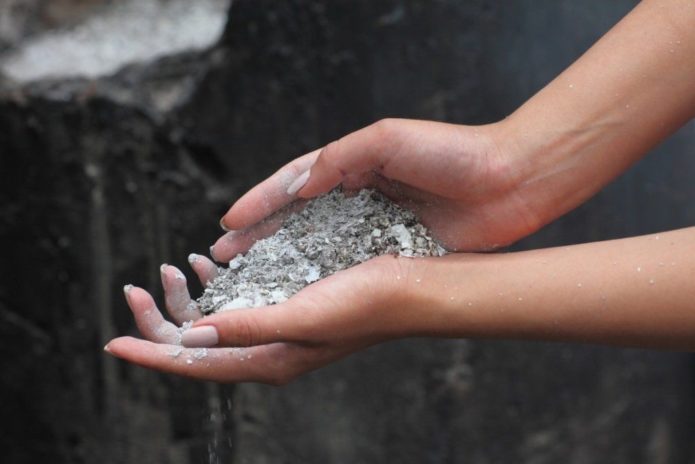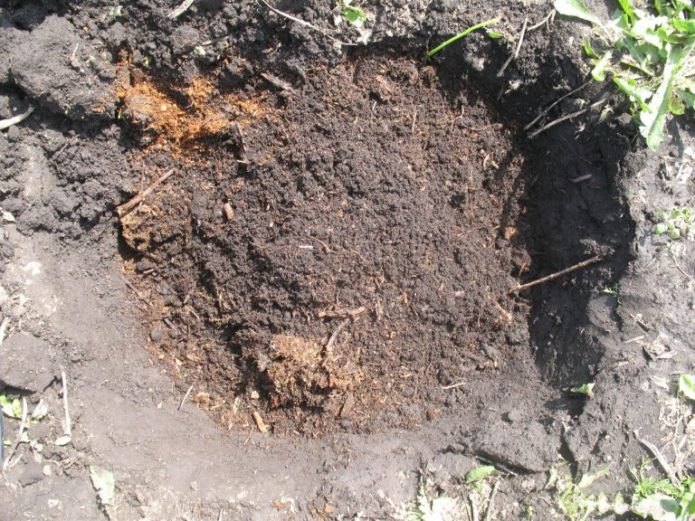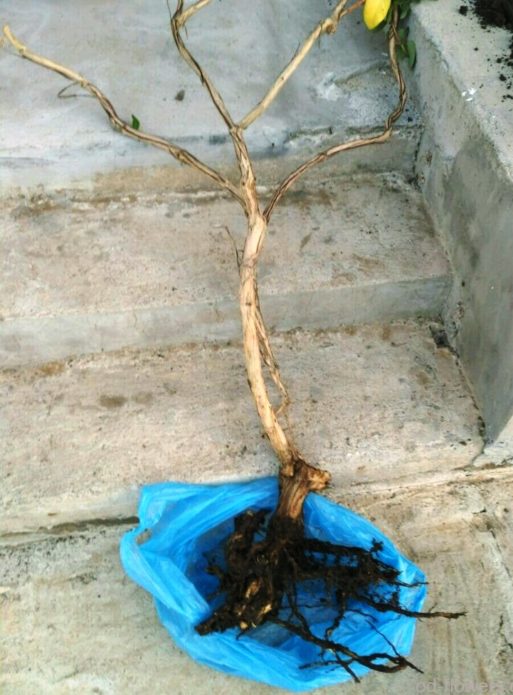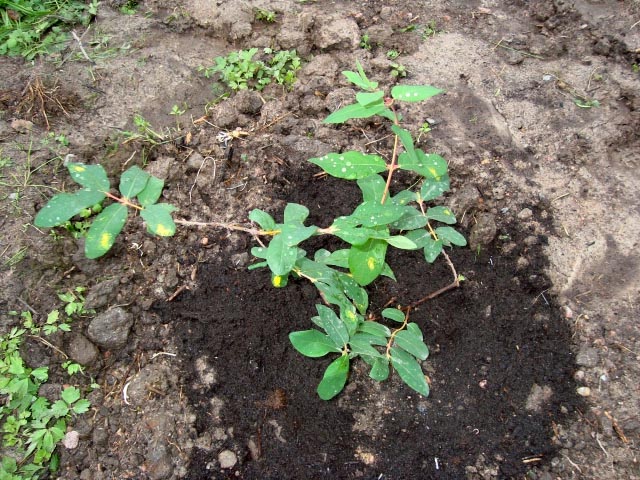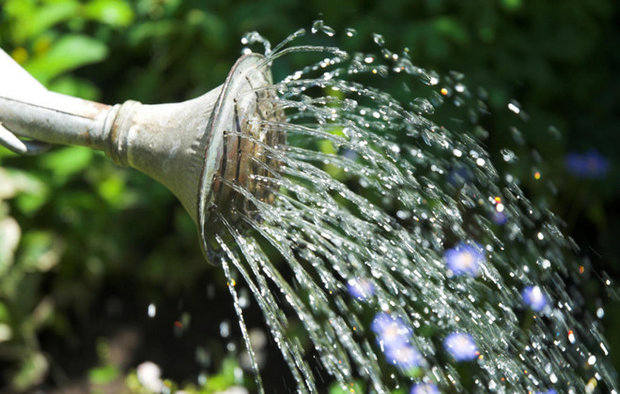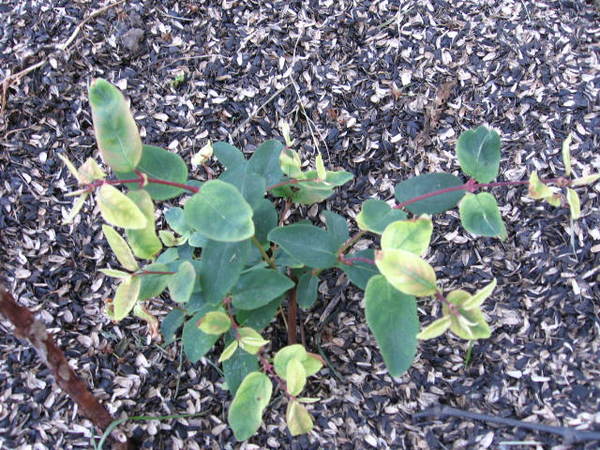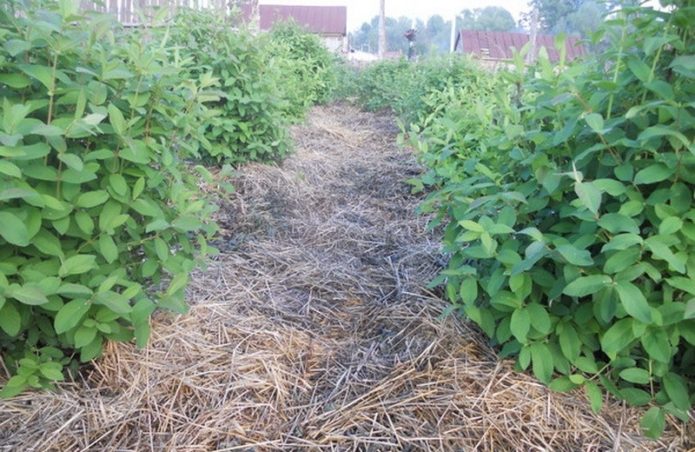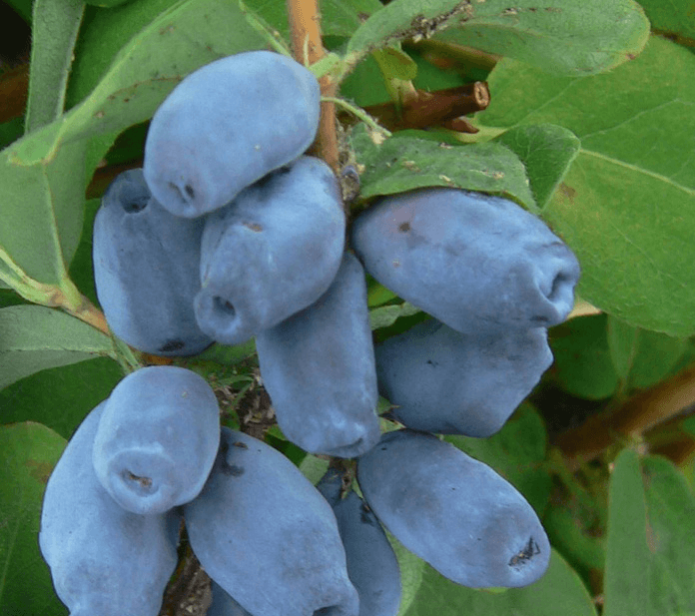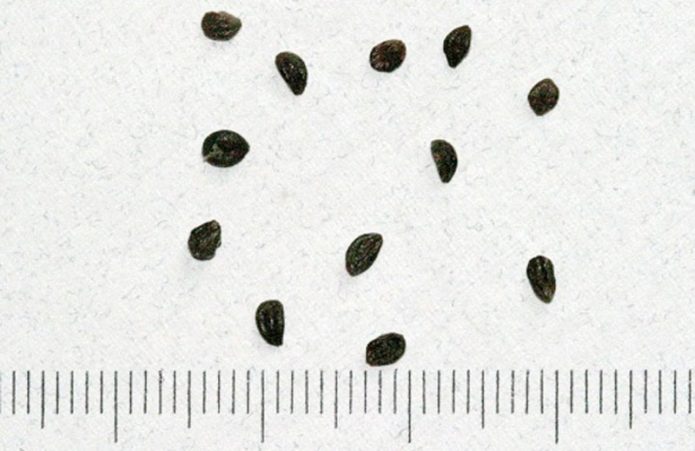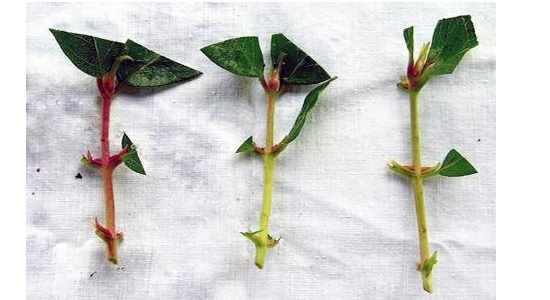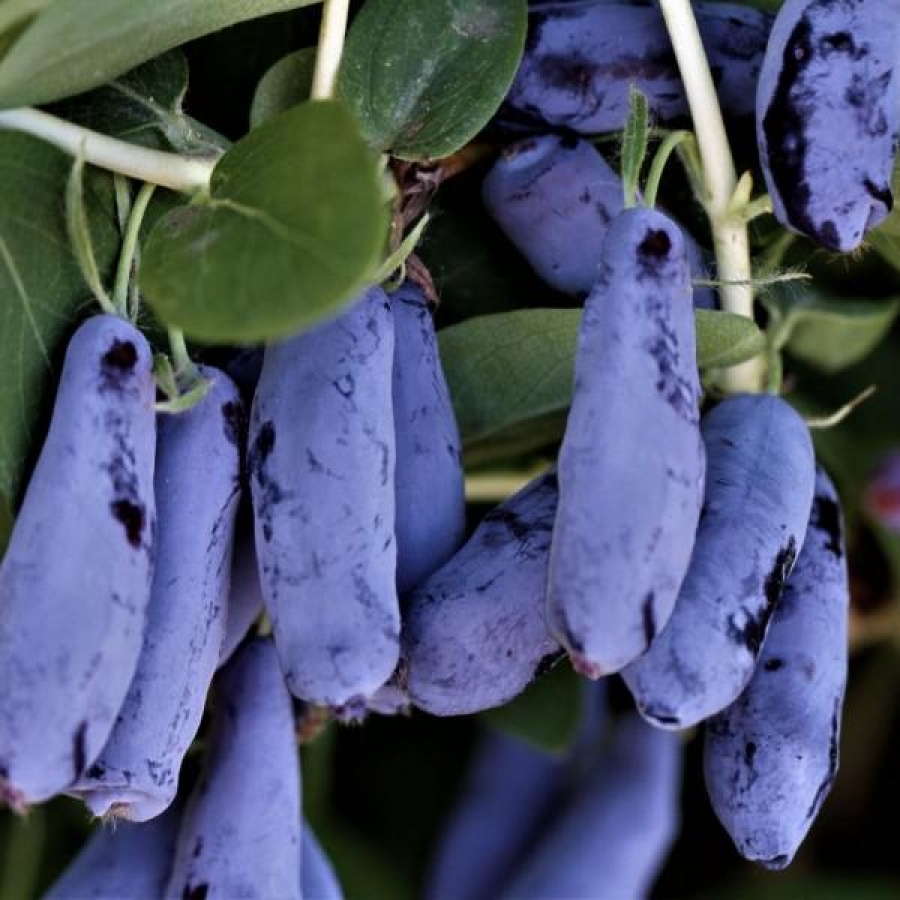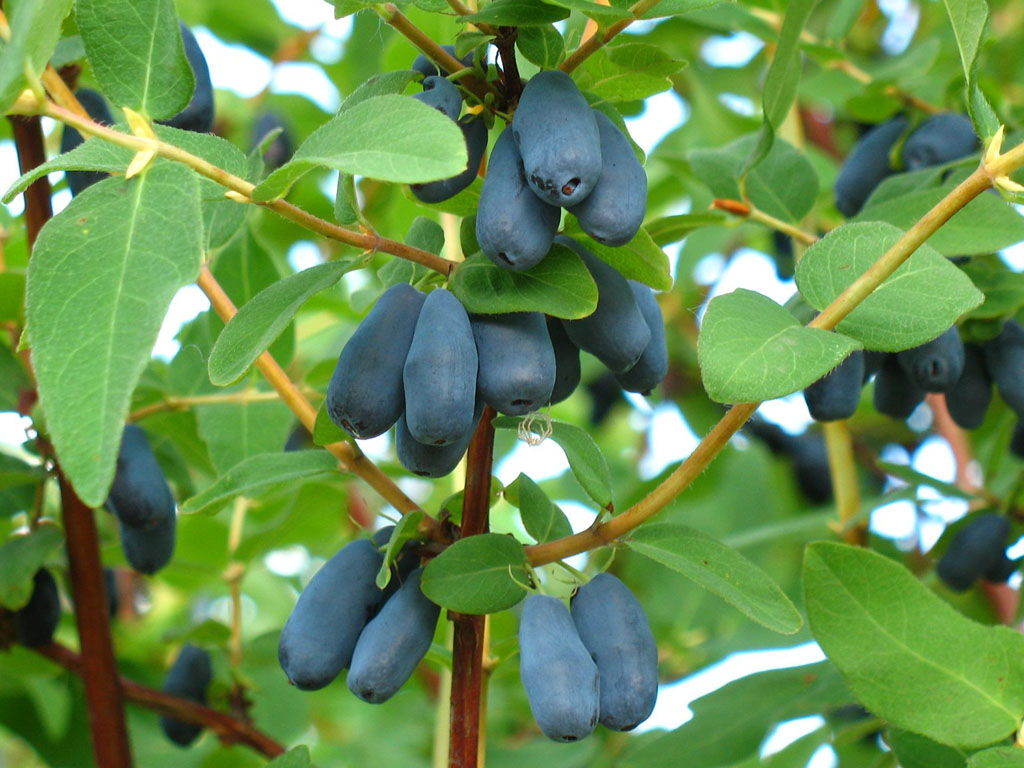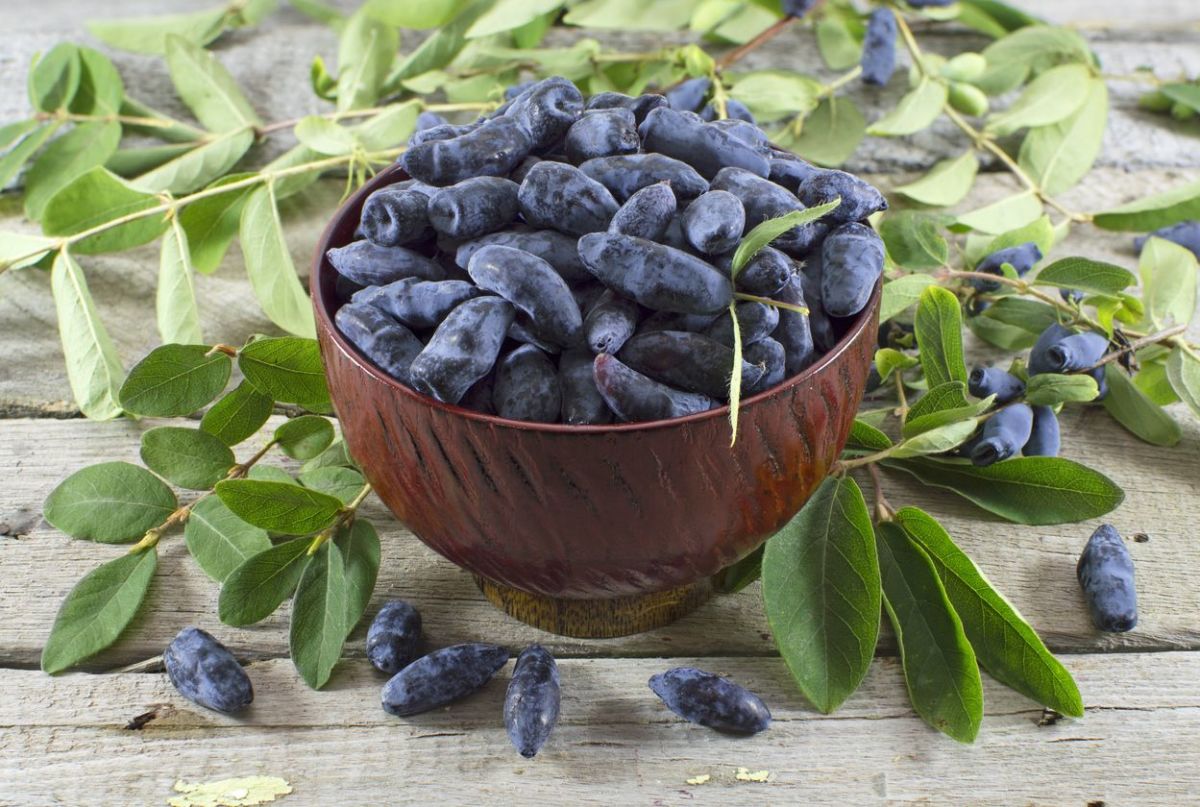Honeysuckle, unlike other shrubs, is rarely planted in summer cottages: many gardeners are simply unfamiliar with this berry. However, it is very useful, and it is one of the first to keep pace, when there are not very many vitamin products in the garden. Planting honeysuckle bushes is simple and no harder to care for than most berry bushes.
Content
Planting honeysuckle: step by step instructions
Planting honeysuckle, if you already have ready-made seedlings, is not difficult. This is done in the same way as in the case of almost any berry bush. It is better to plant honeysuckle in the fall (in September or October), when the bush goes into a dormant state. But if you bought a bush in a container, that is, with a closed root system, you can plant it in early spring, from mid-April. For good fruiting, you need to plant at least two bushes, and preferably three. The progress of the main work when planting a bush with bare roots is as follows.
- A week before planting, we dig a planting hole 50 cm in size in all dimensions. The shape of the pit is any, as it is convenient.
- We swarm neighboring holes at a distance of at least 1.5 m: honeysuckle bushes grow large, and their branches are rather fragile.
- We pour drainage at the bottom of the pit - gravel, expanded clay, broken brick, with a layer of about 10 cm.
- We prepare a nutrient mixture from the top layer of the removed soil by adding 1.5–2 buckets of compost, 1–2 liter cans of wood ash and 100 grams of superphosphate. Mix well.
- We pour the finished mixture into a hole and water it well: depending on the condition of the soil, it may take from 1 to 3 buckets of water.
- A week after preparing a hole in its center, we dig a hole according to the size of the root system of the seedling, place the seedling on its bottom so that the root collar is approximately at ground level: ultimately, it should go into the soil by no more than 5 cm.
- Gently spreading the roots, cover them with medium moisture soil.
- Water the seedling, spending 5-10 liters of water.
- After absorbing water, we make a side around the edges of the hole for subsequent irrigation and mulch the hole with peat, humus or just dry soil.
If a seedling purchased with a closed root system is planted, the planting technique is a little easier. Before planting, it must be well watered so that the seedling removed from the container remains with a clod of earth. If roots stick out from the coma, you cannot cut them off. And most importantly: we leave the root collar at the level of the soil, without deepening it: the seedling during cultivation has already been prepared for exactly this position at the future place of residence.
Let's consider in a little more detail the features of performing some of the steps described above, based on the biological characteristics of honeysuckle.
Where is it better to plant honeysuckle on the site, in the shade or in the sun
Honeysuckle can grow anywhere, but it can develop well and bear fruit abundantly - only in the sunniest areas. She will react negatively to constant drafts, although a moderate breeze will only benefit, driving away various viruses and other sores.
The best place to plant is by the wall of the house, which covers the bush from the north, and from the sides it would be nice to have at least a fence or a fruit tree.
Not bad as protection from the winds is also a bush of lilac or mock orange, in extreme cases - currants. Drafts are scary not only because of the cold wind, but because they can break bushes: honeysuckle is a rather delicate plant, its branches are fragile. Therefore, various elevated places are not suitable for her. Better lowland only if it is not too swampy.
When to plant honeysuckle: fall or spring
It is impossible to plant honeysuckle only during the rapid growth of shoots, which occurs in May or June. At any other time, planting, in principle, is possible if you manage to get a bush with a good earthy clod. But even with a lump, it is better to plant only in early spring (before bud break) or in autumn, and without it - only in autumn, before the onset of real frosts. The most convenient time is in September, but the latest date in most regions is in mid-October.
How many honeysuckle bushes should be planted on the site
Honeysuckle is a cross-pollinated plant. Translated into simple language, this means that for the normal setting of berries, at least two bushes are needed, and preferably more. This does not mean that you will not try berries from one bush. You will not only try, but also collect some, but a real berry paradise is observed where there are many honeysuckle bushes. And even better, if planted 3-4 bushes of different varieties, but the same flowering period.
What kind of land does honeysuckle love
Honeysuckle can grow even on uncultivated, nutrient-poor lands. But “can grow” and “feel good” are different concepts. Loose soils, rich in humus, moderately sandy, moderately clayey, are most suitable for planting it. The acidity of the soil also matters: the optimal pH is from 6.0 to 6.5, that is, slightly acidic. If the area is overgrown with horsetail, it means that the soil is highly acidic, and in advance, at least a month in advance, it is necessary to dig it up with slaked lime or chalk (a couple of handfuls per 1 m2). If the soil is neutral, it is not necessary to acidify it specially, it is quite suitable for honeysuckle.
The bush will feel bad in heavy clay soil, and even more so if groundwater approaches and stagnates close to the surface. This situation is fraught with root decay. If there is such a problem on the site, you can plant the bushes on an elevated bed, and pour more drainage into the planting pit.
Planting depth of honeysuckle
Like all plants in the garden, honeysuckle is planted in pre-prepared pits. The size of the pit is not too large - from 40 cm in all dimensions. The pit should be filled with fertile soil mixed with fertilizer.First, so much soil is poured so that the seedling placed on it looks outward, and the root collar is at ground level. With further filling of the hole by filling the roots with soil and watering, the seedling will drop slightly, and the neck will be 4–5 cm lower. This is the best planting depth for honeysuckle.
Fertilizer when planting honeysuckle
When digging a planting hole, as always, it is necessary to preserve the upper fertile soil layer (20-30 centimeters, in different places the numbers vary greatly) and throw out the lower, useless one. Organic and mineral fertilizers must be added to the fertile layer before filling it back into the pit. In terms of the choice of fertilizers, honeysuckle is not picky: it needs average rates of all basic nutrients. Therefore, the approximate alignment is as follows: 1.5-2 buckets of well-rotted manure or compost, a liter can of ash, 100-150 g of superphosphate. You can add potassium salt, but if the ash is obtained from burning wood species, then there is already enough potassium in it. It is important to mix this whole mixture very well.
Honeysuckle planting scheme
As we have already decided, one bush is a last resort. Better - two different. Even better - how much space is enough. The distance between the bushes should be such that the bushes do not interfere with each other, so that the branches do not break when processing the bushes and harvesting. A meter is absolutely the minimum. Even for the most humble bushes. You need at least one and a half: then the bushes will be at ease, and they will thank the owner with a high yield. If there are many bushes and there are more than one rows, then the distance between the rows should be such that you can walk freely. Hence, from 2.5 to 3 meters. We must realize that honeysuckle has been living for more than 20 years, and all this time it continues to grow.
In recent years, many have been trying to plant Malvina honeysuckle. In general, a good variety, no worse and no better than many, but it is famous for its high yield due to very large berries. It grows taller than human height, has a dense crown. Resistant to frost, disease and pests. Berries can reach 3 cm in length and up to 12 mm in diameter, their taste is estimated as dessert, tasters give ratings up to 4.5 on a five-point scale. They ripen in mid-June, but hang on bushes for a long time. However, there are very few berries on a lonely bush. Even a bush of the same variety, planted side by side, leads to a sharp increase in yield. And the best pollinators are Blue Spindle, Start, Blue Bird.
As already mentioned, the desirable neighbors of honeysuckle are tall, dense fruit trees: apple, pear, plum. They will protect the bushes from the winds.
A bad neighbor is a walnut, but it is bad for many people: with its powerful roots it eats and drinks everything around. The apricot also sins the same.
Caring for honeysuckle after planting
Honeysuckle planted in the fall will winter well: there is no need to worry about this, although it will not hurt to cover the bush slightly, at least covering it with 10-15 cm high pine needles, for the first winter. In early spring, it is necessary to well loosen the soil around the young plant. And in subsequent years, loosening, or better - digging for half a bayonet should be carried out. In the first year after planting, the bush should be watered regularly. In the future, watering is needed depending on the planting site and on the condition of the soil, but it should never dry out. In an especially hot summer, it happens that honeysuckle also requires daily watering.
Top dressing will be required only from the third year. In the spring, it is best to pour a bucket of compost around the bush, shallowly embed it in the ground with a hoe, and in the fall, add a half-liter can of wood ash in the same way.
You can do without purchased mineral fertilizers if the bush develops normally and bears fruit well.
For the first five years, the honeysuckle secateurs are almost unnecessary. In the spring, only dried and clearly interfering shoots should be cut. But then the bush grows so much that it needs to be thinned out elementarily.There are no clear rules for this: we cut obviously unnecessary and what already gives weak gains.
Storage of seedlings before planting in the ground
If suddenly you have seedlings, but you can't plant them, you can save them before planting in the ground, but the method depends on the season and the condition of the seedling. If it's spring and the kidneys are sleeping, you can just put them in the refrigerator. And if growth has begun, it is necessary to urgently plant a bush, at least temporarily, in some pot of suitable size. It will take root in the pot, and only then it will be necessary to carefully transplant it into open ground, without disturbing the root system.
If it's autumn in the yard, the purchased seedling is not going anywhere: you can hold it in a wet rag in the refrigerator or cellar for several days, and then into the garden! No hole - dig in until spring. In extreme cases, if it does not work out, it can also be planted in a pot, but if you let it grow at home in winter, it may die: in winter, honeysuckle should sleep. In a pot and in a cellar is one of the possible options, but even there you will have to monitor its condition throughout the winter, the probability of overwintering is low.
Planting honeysuckle with seeds and cuttings
So, we now know how to plant honeysuckle with purchased seedlings. But what if you don't have a ready-made seedling? Anyway, where do they come from? Honeysuckle is propagated most often by dividing the bush, horizontal layers, green or lignified cuttings, even sowing with seeds is possible.
Sowing honeysuckle with seeds
Seed propagation is not an easy task. In addition, it is not known what will happen: it will not necessarily be a seedling of the variety from which the seeds were taken. For sowing, ripe berries are taken and seeds are extracted from them in any way, after which they are washed and dried. You can not dry, but sow immediately. Sowing in the garden is bad: it will be difficult to care for. Seeds sprout hard, and before germination and long after their emergence, good moisture is needed both in the soil and above it. Therefore, you have to sow in a box.
A mixture of equal parts of humus, earth and sand with a small addition of ash is best suited as a soil. Sow shallowly: about 1 mm, into well-wetted soil, then cover with glass and make sure that it is always wet under it. The best distance between seeds is about 1 cm. Seedlings appear tight and grow slowly. Caring for them - watering, loosening, feeding. In late autumn, the box must be taken out into the street, where the seedlings, covered with snow, will winter. Of course, for the first time you need to cover the box with spruce branches or nonwoven material.
In the spring, the seedlings will continue to grow in the open air. As soon as they reach a size of 6 centimeters, they dive into the garden bed and continue to constantly look after. And a year later they are seated in a permanent place.
If you sow seeds in a box in the fall, in November, you can immediately take it out into the open air. Until spring, the seeds will undergo natural stratification, and in the spring sprouts will hatch and begin to grow. Regular watering is needed until autumn, until 3-4 pairs of leaves are formed on the seedlings.
Planting honeysuckle cuttings
Propagation by cuttings is the most common way of planting berries. Honeysuckle can be propagated by green, lignified and combined cuttings. Lignified cuttings are easiest to work with.
They are cut and planted directly into the ground in early spring. The thicker the stalk, the better; the optimal diameter is 7–8 mm. Length - about 20 cm. In loose fertile soil, right in the garden, you just need to bury the cutting half. Two buds are left above the ground, the first at soil level. It is useful to put a plastic bag on the handle, then in a month it should already give roots. Some gardeners cover the cutting with a three-liter jar and do not remove it for several weeks. If the heat is not strong, this is one of the easiest ways to create the necessary humidity, but it is desirable that direct sunlight does not fall on the garden.
With green cuttings, the situation is not so simple: they must be constantly monitored to ensure good moisture.
They are planted in the same way as lignified ones, but it is imperative to cover them with a film and water them, and sometimes ventilate them so that there is no drying out or excessive soaking.
Rooting of cuttings can also be carried out in greenhouse conditions, or at home, in an ordinary pot for indoor flowers.
The combined cuttings are cut immediately after the flowering of the bush from the growths of the current year, but they also leave the "heel" from last year's shoot on them. Be sure to soak the cuttings in a solution of a root stimulator. They are planted to a depth of 5–6 cm and covered with a film, keeping an eye on the moisture underneath. Roots appear in 20-25 days.
Features of decorative planting of honeysuckle
Honeysuckle is not always planted for berries, the bush itself is beautiful and can be used as a hedge. But special decorative varieties are especially beautiful. Most of them are vines, that is, the shape of the bush is curly. Abundant flowering occurs in May - June, which is used in decorative landscaping of areas.
For example, honeysuckle honeysuckle gives shoots up to 6 meters long, which climb almost three meters in height over any obstacles. Flowers of orange-pink and sometimes raspberry color with a strong pleasant aroma eventually turn into red poisonous fruits. This honeysuckle is often planted around arbors. Honeysuckle is very hardy, growing for several decades.
Caprifol does not like transplanting, so you need to immediately plant it in a permanent place. Like any honeysuckle, it loves the sun very much and does not like drafts. They plant it immediately near the support - the wall of a house or a fence. When planting, it must be borne in mind that the liana grows in all directions, taking up a lot of space. Young shoots, touching the ground, easily root and give new vines. Planting climbing honeysuckle is generally similar to planting ordinary varieties, but in order to grow as quickly as possible, shoots are often immediately laid in a dug trench: a new shoot grows quickly from each buried bud.
Features of planting honeysuckle in the regions
Honeysuckle is a plant from the taiga, came from Eastern Siberia and the Far East, grows in the wild and in Kamchatka, is highly winter-hardy. It is found even in the Polar Region. In nature, it lives on mountain slopes in ravines, in mixed shrubs. It is from the Far Eastern and Kamchatka species that modern varieties for personal plots were bred. Most often it is planted by summer residents of the north of the European part of our country, the middle zone (in particular, the Moscow region), and the central black earth regions.
Honeysuckle is not afraid of frosts, unexpected winter thaws are much more dangerous, so you should be especially careful about planting in the middle zone, where thaws often occur. In summer, the plant does not like extreme heat and dry weather, therefore it grows poorly in the southern regions, yields are not very large.
In the Siberian region, honeysuckle grows well, so many plant it, but the most frost-resistant varieties are chosen. Planting is preferred in late spring, since autumn is still risky due to the possibility of freezing of an immature seedling in winter. They try to plant not very small bushes, but two or even three years old. Therefore, the planting hole is made large, up to 1 meter in diameter and 70 centimeters in depth. Be sure to mulch the hole after planting, usually with sphagnum moss.
In southern Russia, enthusiasts are trying to plant honeysuckle, some succeed, although the harvests are far from normal, and even then they do not happen every year. Most experts advise planting honeysuckle in the southern regions in the shade and watering systematically.
In the middle lane, the summer weather is favorable for honeysuckle, one has to be afraid of the winter eccentricities of nature, when frosts alternate with warmth. In the Moscow region and throughout central Russia, planting is best done in the second half of September. The most sunny place for planting is chosen, the planting technique is usual, but it is recommended to make a drainage layer in the planting pit at least 15 cm.In central Russia, the most popular varieties are: Dolphin, Blue Bird, Blue Spindle, Moskovskaya-23. Most of them ripen at the very beginning of June.
Video: planting honeysuckle
Transplanting honeysuckle to a new location
If for some reason it is necessary to transplant a honeysuckle bush to a new place, it is easy to do this only in the case of young bushes: after the age of five, failure is very possible. If a young plant is transplanted correctly, avoiding serious damage, then it will not hurt for long and will again continue active growth and fruiting.
When to transplant honeysuckle
Honeysuckle transplant is carried out exclusively in autumn: best of all - in the first half of September, but no later than mid-October. Spring transplantation is possible, but very difficult and can even lead to the death of the bush. By the time it is possible to work in the garden, when the ground thaws, the honeysuckle has already begun a period of active sap flow, and without disturbing some of the branches and roots, it will still not be possible to transplant. This means that in the spring, when transplanting, the plant will lose a lot of strength, which should not be allowed.
Video: timing of honeysuckle transplant
Planting pit preparation
A new hole should be dug larger than when planting young plants. The minimum dimensions are 70 cm both in depth and in diameter. The pit should contain drainage and nutrient soil with an increased amount of both organic and mineral fertilizers. Humus, superphosphate, and ash are needed, about twice as much as with a normal planting.
Preparing a bush for transplanting
Before digging the bush, it is necessary to cut off all dry, broken and obviously unnecessary branches, and shorten the ones left by about a third. It is desirable that in the end the height of the bush was no more than 50 cm. The bush is dug out very carefully, starting to dig a circular trench about half a meter from the base of the bush. The task is to take out the bush along with the earthy clod without damaging the roots. This means that the bush must first be watered well. After digging in, carefully remove the bush onto a tarp. The roots that protrude beyond the clod can be trimmed.
When planting a bush in a new place, you must try so that the roots are not broken or strongly bent, but take the same position that they had in the old place. The root collar is also left at the same level as in the old pit. The voids are covered with fertile soil and the bush is watered very well. Be sure to mulch.
Transplanted bush care
Caring for a bush in a new place does not differ from the usual care for honeysuckle, but at first intensified watering is needed, and in the spring, the first feeding with complex mineral fertilizer is already desirable.
Planting honeysuckle is no more difficult than planting any berry bush. Placed in the right place next to its relatives, the bush does not require serious care, for several decades delighting the owner with the earliest vitamin berries of the season.
